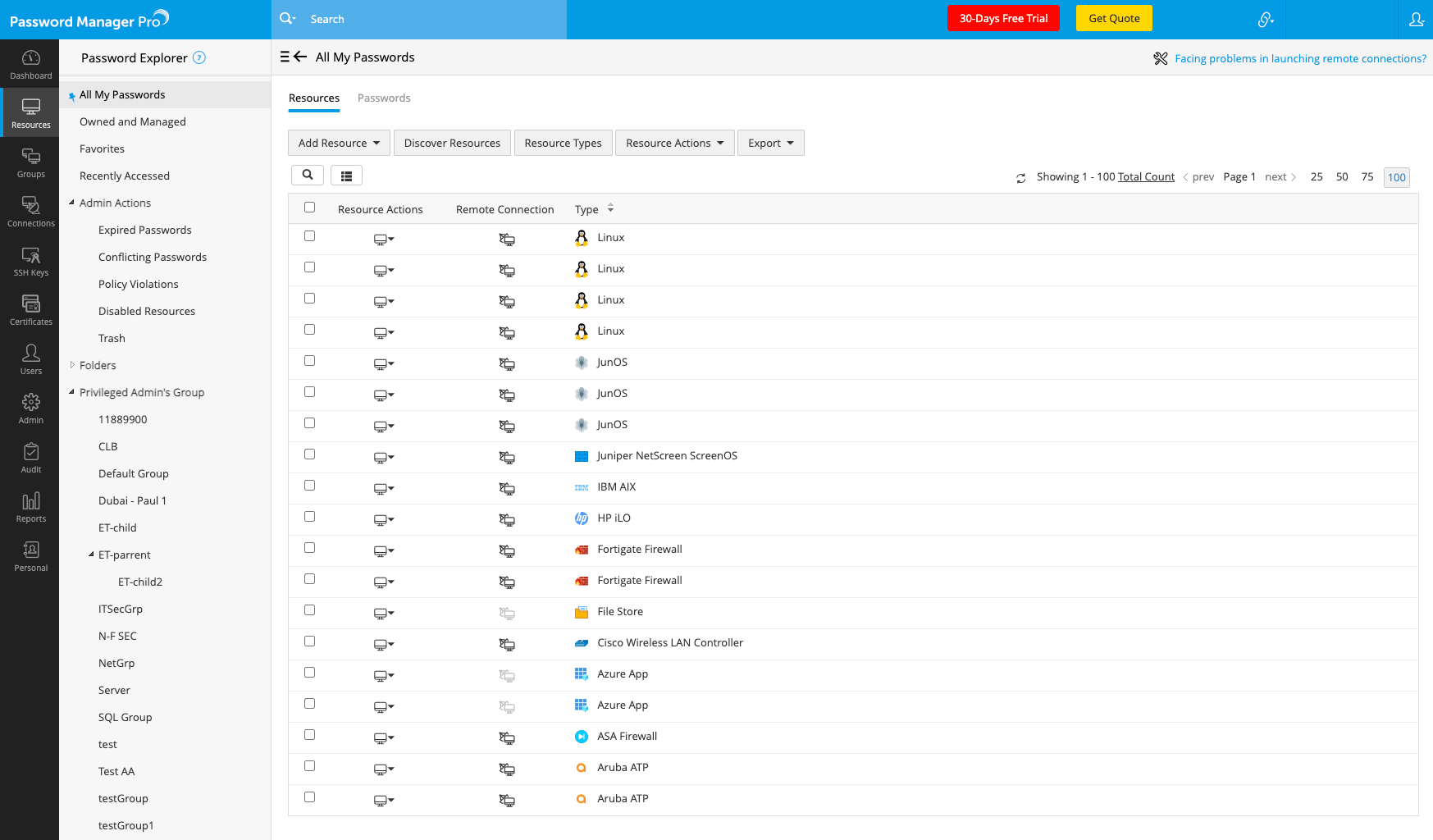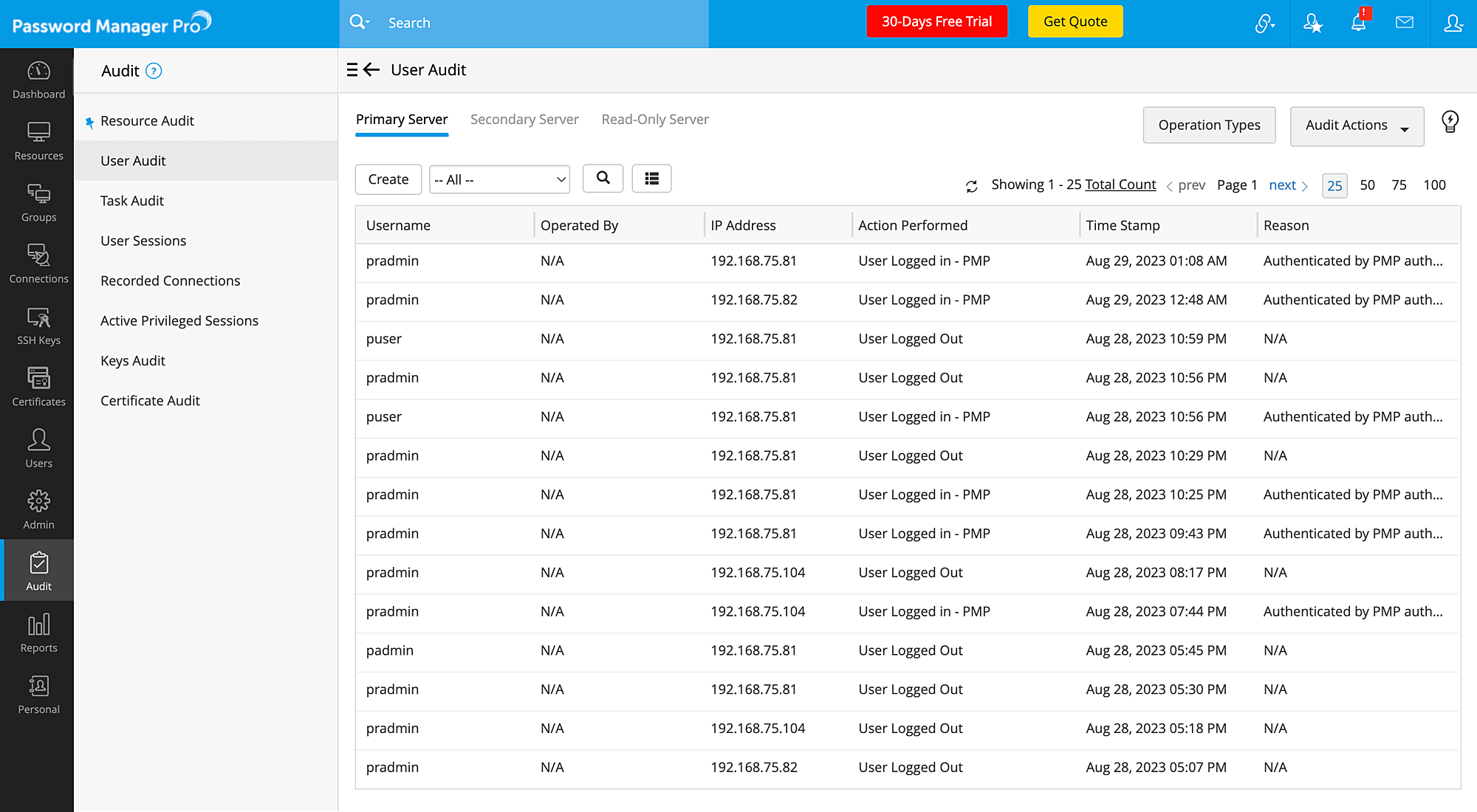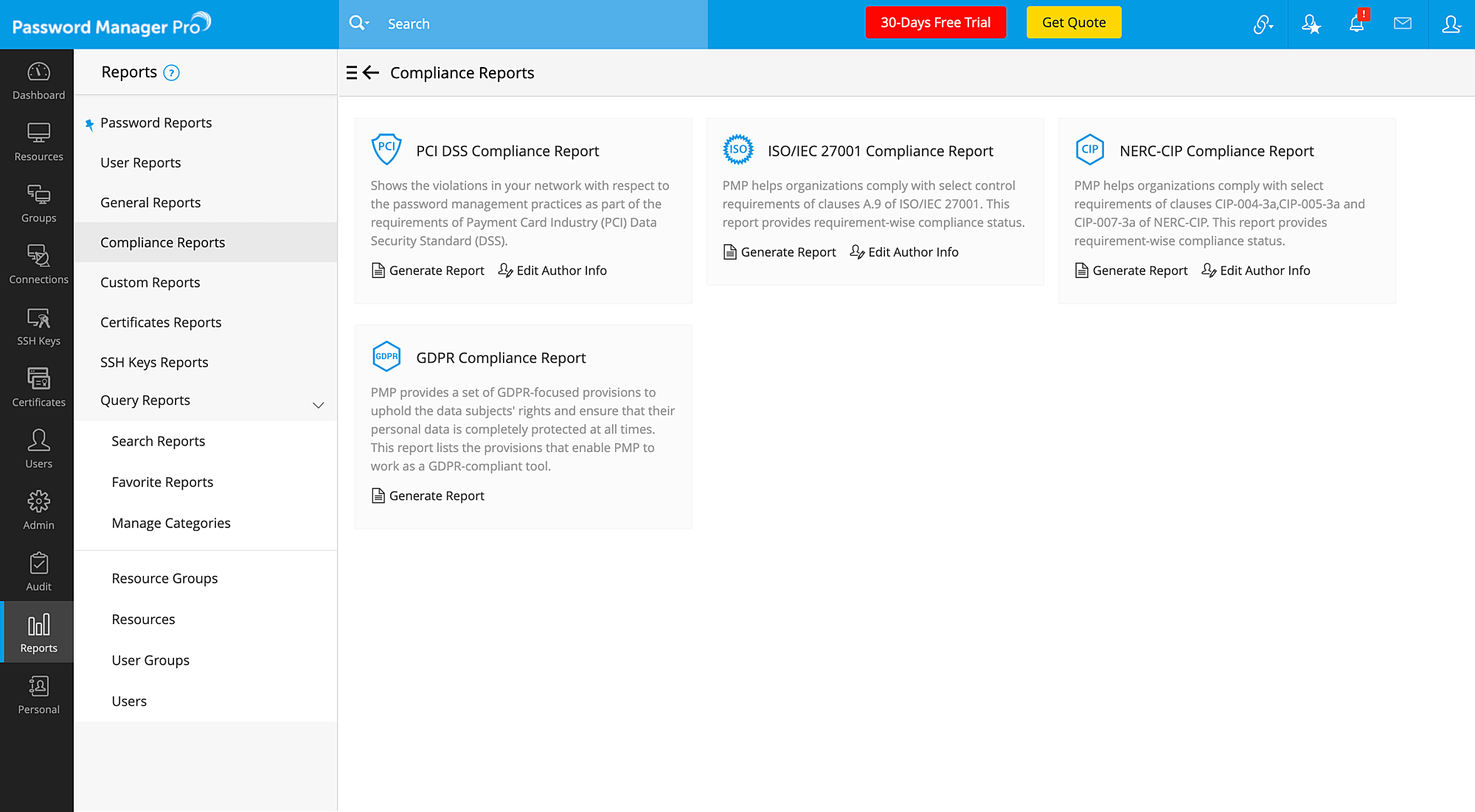What is enterprise password vaulting software?
Enterprise password vaulting, in the context of IT management, refers to the process of storing privileged identities, such as shared credentials, accounts, certificates, and other digital entities that are of critical and highly administrative nature. An enterprise password vault (sometimes referred to as enterprise password manager) is a software that stores privileged identities in a secure and encrypted repository.
Why do organizations need an enterprise password vault?
Organizations are home to numerous privileged accounts and passwords, and can provide anyone in charge of these credentials with exclusive access to business-sensitive information and systems. Strong passwords aid in limiting access to critical data to privileged users; however, it is painstakingly difficult to manually consolidate and manage corporate passwords due to their sheer volume. Tracking a large number of passwords via localized databases is not only a tedious process, but can also lead to unauthorized users gaining control over privileged accounts.
Password vaulting solutions help in mitigating the risks associated with privilege misuse by automatically keeping all passwords and accounts secure and up to date. Additionally, password vaulting software offers options to declutter and organize passwords based on enterprise requirements, which helps maintain a hierarchical list of password groups (based on operating system, devices, databases, and so on), making it easier for admins to perform bulk operations seamlessly.
Privileged account governance on autopilot
Manual management of privileged accounts is a cumbersome process that involves the periodic discovery, tracking, and storage of tens of thousands of passwords in real time. Even the slightest negligence, from unavailability of admins to purposeful misuse of privileges, could put organizations at risk of data breaches.
That said, password vaulting solutions help eliminate password fatigue by automating the best practices of privileged access management (PAM), such as password generation, creation, rotation, monitoring, and deletion, thereby improving the operational efficiency. Additionally, an enterprise password vault helps eliminate hard-coding and manual updating of passwords by including an option to implement password rotation for complex passwords, including application-to-database and application-to-application passwords.
Credential vaulting solutions help simplify and streamline the password management process with automated account discovery; user provisioning and deprovisioning; and periodic password rotation, auditing, and reporting. Additional integration with other IT systems such as help desk software, IT analytics, and security information and event management (SIEM) tools ensures seamless compliance with regulatory standards (i.e., HIPAA, PCI DSS, SOX, and so on), and aids in timely and smoother resolution of password-related issues.
How can an enterprise password vault reduce cybersecurity risk?
Enterprise password vaulting solutions, to a great extent, reduce the security risks associated with privilege misuse by protecting and restricting access to highly-privileged accounts and credentials. These tools also offer granular password sharing options, where administrative credentials can be shared with standard users with varying levels of permission (view, modify and full access) based on their roles and requirements.
Some password vaulting solutions also come with a enterprise password management capabilities, such as privileged session management, which allows administrative users to launch one-click, direct access to remote endpoints through standard protocols, such as RDP, VNC, SSH, and so on, without requiring to type out the credentials manually.
Following are some business benefits of using an enterprise password vault.
Top benefits of a robust enterprise password vault
The role of password vaulting software is not limited to just providing a securing storage to enterprise passwords, but also extends to securing, managing, and governing access to shared sensitive resources. Following are the top benefits of leveraging a password vaulting solution:
01. More than just passwords
Enterprise password vaults go beyond storing just the passwords of privileged accounts, and extend to consolidating and managing several other sensitive assets, such as web accounts, public and private keys, digital certificates, license keys, digital signature files, documents and executables, and application credentials. The centralized repository is designed to support corporate entities' secure storage, and is encrypted at multiple levels to ensure rock-solid security.
02. Centralized control over critical assets
Enterprise password vaults provide administrative users with central and complete control over privileged resources. This can help establish granular control over high-value accounts, and aid in provisioning strict, role-based access to shared sensitive information.

03. Clear accountability of user activities
Practice proactive IT security by tracking user activities in real time. Mandate administrative access to critical resources subject to prior approval and review by admin users. Establish a request-release mechanism to eliminate the possibilities of privilege misuse.

04. Seamless compliance audits
Comply effortlessly with privileged access control standards set by the GDPR, NIST, FISMA, HIPAA, SOX, PCI DSS, NERC CIP, ISO/IEC 27001, CCPA, and more. Generate compliance reports that mandate strict adherence to the best practices of privileged access management.

The password vaulting process
In the context of privileged access management, enterprise password vaulting refers to securing highly-privileged, shared sensitive information, accounts, and passwords in an encrypted software vault. Privileged users and admins can control who is allowed to access the data, when, and for how long, and the data stored in the vault can be shared via a role-based access mechanism. The three fundamental steps of the vaulting process are as follows.
01. Auto-discovery of privileged assets and other shared sensitive information
Enterprise password vault solutions leverage automations to take stock of all the critical IT assets, domain and associated service accounts pertaining to corporate endpoints, and cloud and virtual environments across the network. This is usually followed by consolidating and storing the credentials in an auto-updating, secure repository, which comes with multiple levels of encryption using avant-garde algorithms like AES-256.
02. Automated password rotation, randomization, and reset
Password vaulting software lets you rotate passwords periodically, saving a considerable amount of manual effort and time. It also helps eliminate downtime by simultaneously rotating credentials used to secure access to confidential data and applications. Additionally, enterprise password vaults provide password reset options to support a wide range of target resources, either automatically through scheduled tasks or on demand.
03. Granular and complete control over passwords
To help admins get complete governance over passwords, enterprise password vaults provide the option to grant access to critical assets with varying levels of permission. Further, admins can set up a request-release workflow requiring users to provide a valid reason while raising a temporary access request to a particular resource. Upon the expiry of the requested period, the access to the resources will be revoked, and the passwords will be automatically changed to eliminate any possible misuse and unauthorized access to IT resources.
Similarly, orphaned privileged accounts that have no associated owner because of user unavailability will be automatically transferred to other authorized users. To ensure further safety, password vaults can provide secure access to privileged systems without revealing the passwords in hard-coded, plain text formats.